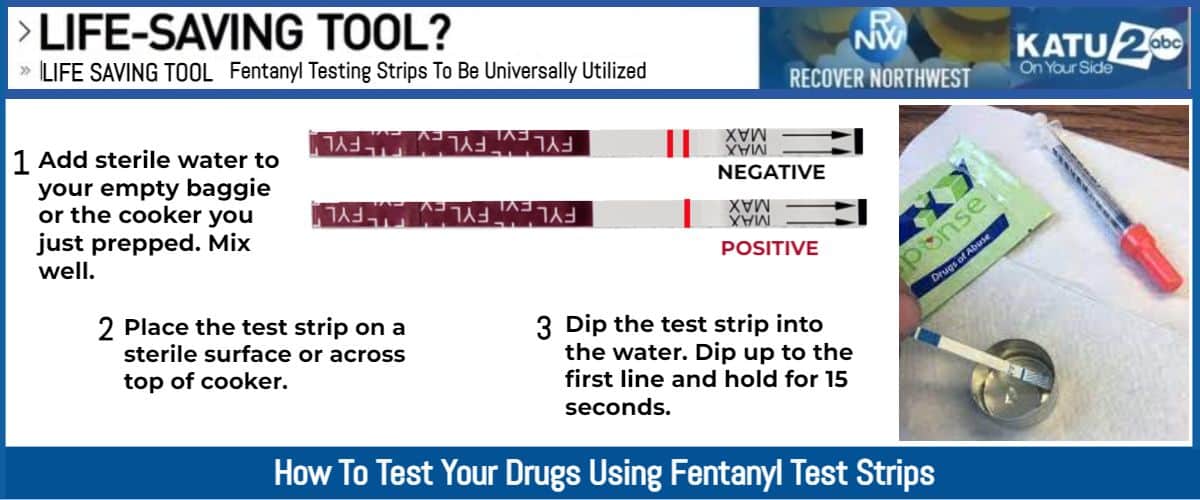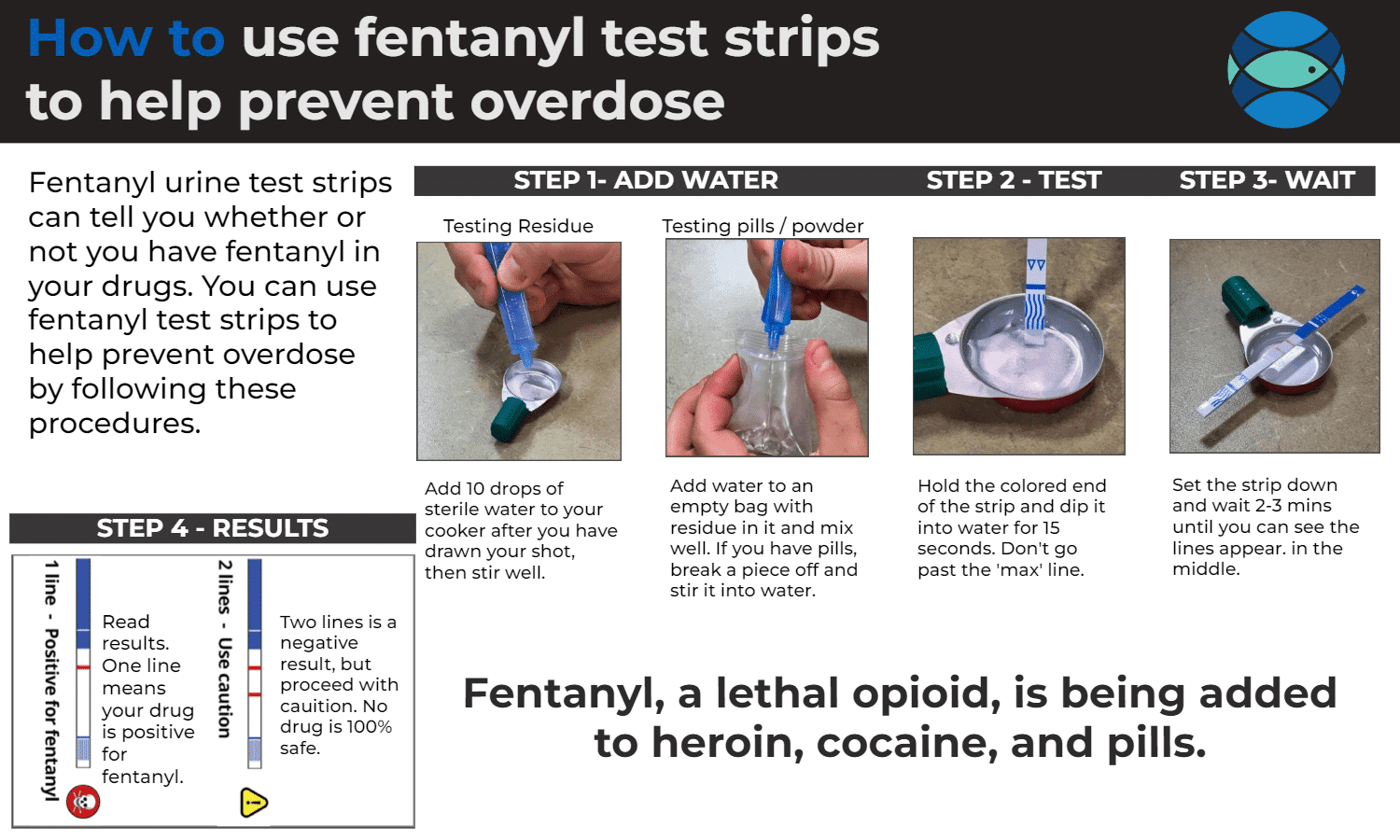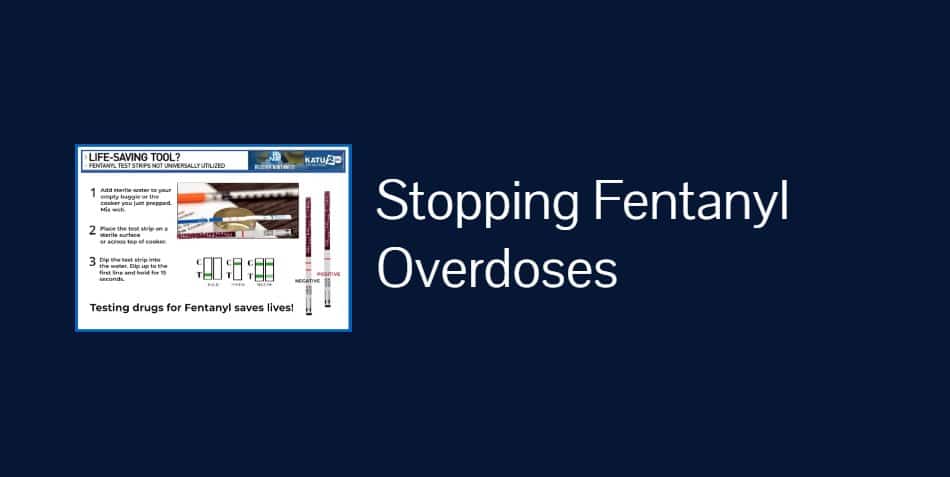Stopping Fentanyl Overdoses: The Power of Fentanyl Test Strips.
Amid the opioid crisis, where fentanyl lurks in street drugs, the need for novel harm reduction measures has never been greater. And stopping fentanyl overdoses has never been more critical.
Fentanyl, a synthetic opioid up to 100 times stronger than morphine, is packed into white powders or mixed into innocuous-looking tablets. It has carved out a lethal reputation, contributing to a stunning spike in overdose deaths.
Addressing this covert threat square on, fentanyl test strips have arisen as a beacon of hope, giving people the ability to decipher their immediate surroundings and make informed health decisions.
This vital tool could be the difference between a fun night out and a life-changing overdose; therefore, it’s critical to grasp their position and purpose in today’s substance landscape.

Understanding Fentanyl Test Strips and Their Operation
Fentanyl test strips use lateral flow immunoassay technology and operate on a simple, obvious principle. Applying a solution of the medicine in question to a pad. The material moves across the strip by capillary action, encountering anti-fentanyl antibodies.
If fentanyl is present, a reaction occurs, which the user can identify as the emergence of a line, similar to a pregnancy test.
These tests are convenient not just because they are quick to detect but also because they are portable and discreet. Users can carry them in their wallet or pocket, keeping them readily hidden until needed.
Overdoses can occur not only in dark alleys but also at a party, social gathering, or anywhere drugs are consumed, making accessibility crucial.
The Devastating Scope of the Opioid Crisis
Before delving into the benefits of these tools, it is critical to recognize the magnitude and devastation caused by the opioid crisis. Communities across the United States have seen a degradation of public health, safety, and well-being, with the consequences of this crisis as widespread as they are harmful. The epidemic’s causes are complex and multidimensional, involving concerns about socioeconomic disparity, healthcare, and public policy.
Individuals struggling with addiction, their loved ones, and entire communities are reeling from its effects. The epidemic reminds us that the toll of opioid addiction goes beyond the acute health hazards; it also includes the socioeconomic load, crime, and systemic stress placed on emergency services. Stopping overdoses before they occur is a societal obligation.
The Use of Fentanyl Test Strips in Prevention
Fentanyl test strips are clearly advantageous for persons seeking to engage in harm-reduction behavior. They act as an early sentinel, warning consumers of the existence of this strong opioid in their drugs. Individuals can use this critical information to modify their drug usage, whether by proceeding with care, adjusting dosage, or abstaining entirely.
The intricacies of the chemicals being tested make fentanyl test strips invaluable. In an era when polydrug use is on the rise, understanding the composition of one’s medicines has become a complex equation. It also humanizes the drug-using experience by highlighting the user’s right to safety and well-being.

A New Dimension of Harm Reduction.
Harm reduction initiatives are based on the pragmatic acceptance that drug use is a reality. Rather than moralizing, these initiatives aim to reduce the negative consequences of drug use.
Enter fentanyl test strips, a classic harm-reduction tool that coincides with public health objectives by lowering mortality and preventing disease.
The ultimate goal is clear: to treat drug use with a pragmatic approach focused on lowering its consequences, with fentanyl test strips serving as a novel and useful instrument in this effort.
These strips promote a new narrative in which health and safety take primacy by emphasizing personal responsibility and informed choice in drug use.
Obstacles and the Need for Broader Adoption
Despite the growing evidence supporting the usefulness of fentanyl test strips, their use has not been widespread. Obstacles in the regulatory and legal sectors frequently prevent widespread availability, indicating the need for advocacy and policy changes.
Challenges include successfully sharing the tools and ensuring correct usage.
To fully realize the potential of fentanyl test strips, extensive educational efforts and government backing are required.
These efforts will not only broaden the reach of these life-saving technologies but will also demonstrate society’s commitment to saving lives caught in the opioid nexus.
Moving Forward: A Collaborative Approach to Saving Lives
The inclusion of fentanyl test strips into larger harm reduction projects emphasizes the need for a team effort to effectively tackle the opioid problem. A variety of methods must be implemented to reduce the grim overdose rates, including campaigning, policy reform, community participation, and law enforcement partnerships.
People are rewriting the story of recovery and perseverance in the face of the opioid crisis, empowering themselves to make safer choices. As we continue to combat the opioid epidemic, fentanyl test strips serve as a real, actionable tool that reinforces the simple yet profound message: every life is worth preserving.
In the ongoing fight against opioid overdoses, it is apparent that we are stronger when we work together. Empowering each individual to protect themselves enhances the security of our communities.
Fentanyl test strips are not just cutting-edge technology but also a synthesis of innovation, compassion, and civic responsibility, which has the potential to generate significant change in the heartbreaking opioid narrative.
Nonetheless, while fentanyl test strips represent a start in the right direction, addressing the opioid pandemic demands a multifaceted approach. It requires not only emergency treatments but also long-term initiatives such as increased access to treatment, mental health assistance, and economic possibilities to address the underlying reasons for addiction.

Furthermore, we must eliminate the stigma associated with substance abuse, which frequently prevents people from getting the assistance they require. By cultivating a society that tackles addiction with empathy and support, we may provide a more effective and humane response to this chronic public health issue.
Public policy is crucial in influencing the course of the opioid crisis, and there is growing agreement that harm reduction should be a significant component of that policy.
Harm reduction recognizes that, while the ideal scenario is a drug-free society, reality necessitates practical solutions that mitigate the detrimental effects of opioid use.
Policies that promote harm reduction, such as the provision of fentanyl test strips, not only save lives but also encourage individuals to participate in treatment programs, thereby generating avenues out of addiction.
Encouraging such measures necessitates a shift in mindset, realizing that even small steps toward harm reduction can contribute to great progress in tackling the opioid epidemic.
Acknowledging that opioid addiction arises from a combination of genetics, environmental influences, and socioeconomic realities rather than solely individual decisions or moral failure is essential for understanding its complexities.
As we move forward, it is vital that we prioritize preventative actions. Education and early intervention programs can help address possible substance use disorders before they worsen.
Public awareness efforts that effectively communicate the risks of opioid usage, combined with programs that provide alternatives to pain care, such as physical therapy and non-opioid drugs, are equally vital.
Only by taking a comprehensive approach that includes prevention, harm reduction, treatment, and recovery support can we hope to turn the tide on the opioid epidemic.

The healthcare system must include its approach to pain management in addressing the opioid issue. Physicians and other healthcare providers must receive continual education about the possible hazards of opioid prescriptions and the significance of rigorously monitoring their usage.
Best practices should emphasize the importance of prescribing opioids carefully and evaluating alternate pain management options wherever possible. Comprehensive care models that combine behavioral health assistance and non-pharmacological interventions have the potential to significantly reduce opioid dependency.
Furthermore, developing a strong support network for people in recovery, including community-based services and peer support programs, will be critical to guaranteeing long-term recovery and lowering the risk of relapse.

